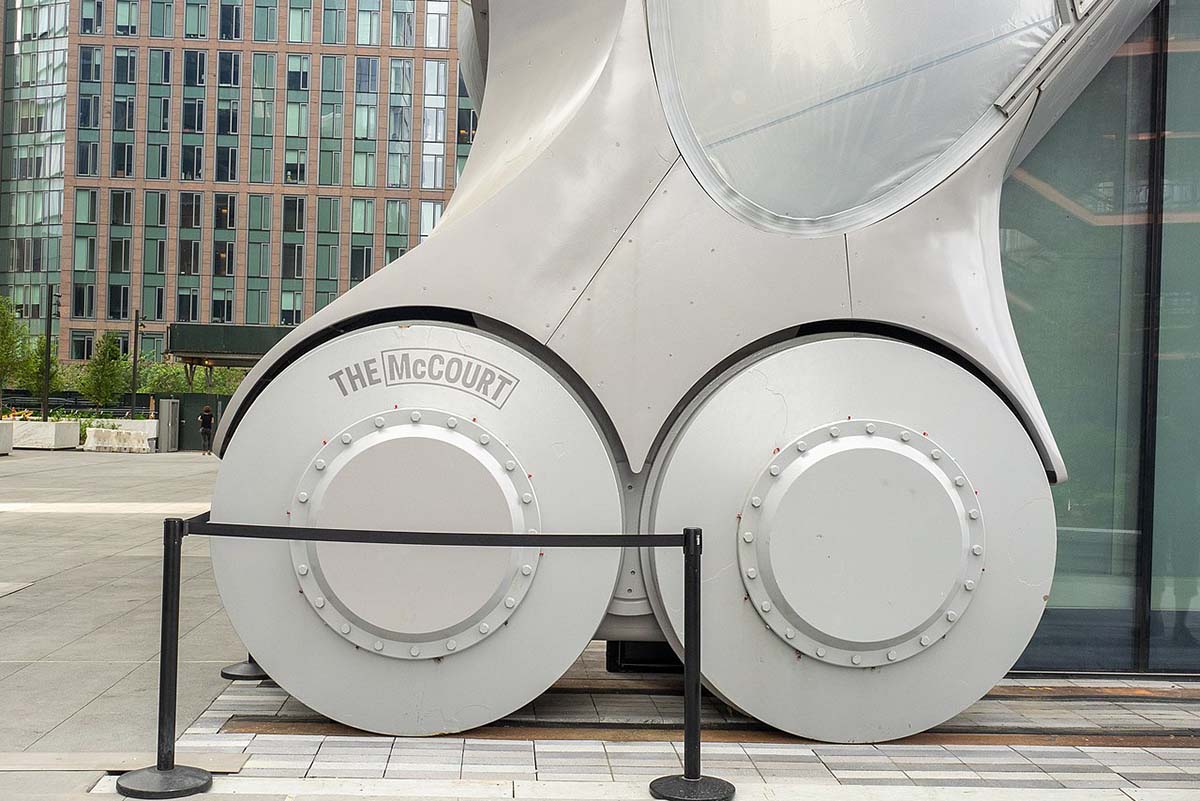
It’s not certain when or where the first wheel was made. It is believed that it was relatively late, and that by the time humans designed the first wheels, agriculture, ceramics, and musical instruments had already existed for thousands of years. What we do know is that its discovery sparked a major revolution.
The wheel has allowed us to design modes of transportation and travel with them, create machines that have all kinds of uses, and fashion tools that make our lives easier. Wheels have made it possible for trains to connect the world and for construction systems to build cities like New York.
Why not use them to transform buildings as well? New York is precisely where the operation of the railway inspired the creation of The Shed, a cultural center that has huge wheels that let it expand and reduce its space and adapt to the needs of each event.
A nod to an industrial past
The Shed is a cultural center in the Bloomberg Building, an eight-story building located at Hudson Yard. For the last few years, this neighborhood on the west side of Manhattan has been – and still is – the center of a redevelopment program that aims to leave its industrial past behind and usher in a new residential and business district.
The Bloomberg Building is presented as a link between the past and the future. On the one hand, it has a mobile steel structure that nods to the industrial past and the importance of the railroad in this area of New York. On the other, it is home to The Shed, a cultural center that aims to be a meeting place for all kinds of creative and artistic experiences. A place that brings culture to the neighborhood.
The building’s eight floors were designed by architects from the Diller Scofidio + Renfro studio and built between 2015 and 2019. It houses space for museums, galleries, exhibition & concert halls, theaters, nightclubs, and creative laboratories. But in reality, there can be many more options, largely thanks to one of the building’s main features: its ability to expand and shrink.
Eight huge railway wheels
When they designed the blueprints for the building that would house The Shed, the architects had a clear goal: this place would be agile, flexible, and multifunctional. The solution they came up with was for the building to house a large mobile shell that could move from the inside to the outside to increase the space enclosed.
This shell has a skeleton made of more than 4,000 tons of steel, which is rounded out with glass and ETFE panels (a type of polymer with high resistance to heat and corrosion). The structure moves via a system of huge wheels that run on rails. They’re similar to those of a train, though with one major difference: they are almost two meters in diameter.

The Shed’s wheels. Ajay Suresh (Wikimedia Commons).
This shell takes five minutes to expand or contract, which it does (completely silently) with a 180-horsepower engine. That’s equal to the engine of a relatively powerful car.
When the frame is spread out, the building has 1500 additional square meters. The so-called McCourt, The Shed’s most iconic space, has the capacity to accommodate an audience of more than 2200 people. The facilities make it possible to control the temperature, sound, and light inside so that it is suitable for all kinds of events.
When the frame is contracted back into the building, the space once again becomes an outdoor square where outdoor events can also be held. As the architects explain, the eastern facade of this square can serve as a screen for projections. In addition, the plaza is equipped with a distributed electricity supply specifically for outdoor functions.
The inspiration behind The Shed
The system that makes it possible for the space of The Shed to expand was inspired by the architecture of Fun Palace by Cedric Price. That project never came to fruition, but its principles have proved very influential in recent decades.
The idea behind the Fun Palace was to create an open steel structure that could be moved via cranes to reorganize the spaces and host different activities. “The Shed takes inspiration, architecturally, from the Fun Palace, the influential but unrealized building-machine conceived by British architect Cedric Price and theater director Joan Littlewood in the 1960s,” the Diller Scofidio + Renfro website explains.
“Like its precursor, The Shed’s open infrastructure can be permanently flexible for an unknowable future and responsive to variability in scale, media, technology, and the evolving needs of artists.”
Since its inauguration, The Shed has hosted all kinds of artistic events in different disciplines and for all sorts of audiences. From hip-hop and classical music concerts to film screenings, plays, and painting exhibitions. For each and every one of them, the large metal structure on wheels has adapted to the needs brought up by the artists.





There are no comments yet